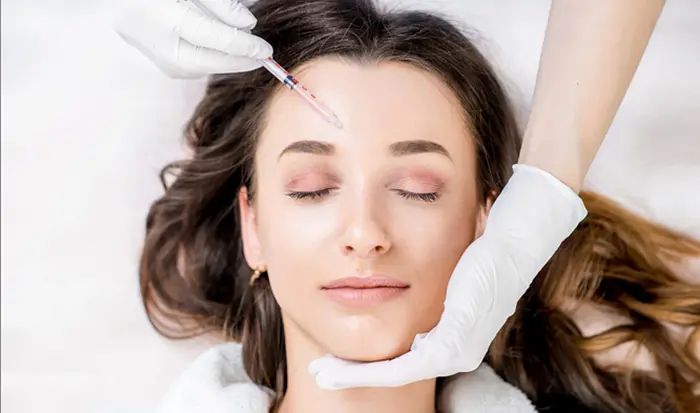Gen Z is known for its proactive approach to skincare and anti-aging, but the trend of frequent Botox use among this generation is raising concerns. While embracing cosmetic enhancements has become commonplace, many young people are experiencing unintended consequences that may leave them looking older than their years.
On social media platforms like TikTok, the hashtag #botox has amassed over 1.3 million posts, with many users in their early twenties going viral for appearing significantly older due to excessive use of Botox, fillers, and other cosmetic treatments. This phenomenon isn’t limited to social media; a 2022 survey by the American Academy of Facial Plastic and Reconstructive Surgery indicated that nearly 75% of facial plastic surgeons reported an increase in requests for cosmetic procedures from patients under 30.
Dermatologists are expressing concerns about this trend, noting that many Gen Z patients cite fears of looking old, despite being in their twenties. “It’s mostly not necessary and just a real source of anxiety,” says Dr. Brooke Jeffy, a dermatologist. “Oftentimes, they’re moving their face, and we don’t even see wrinkles, but this is what they’re afraid of.”
Determining the appropriate age for Botox varies from person to person, but most dermatologists agree that the twenties are too early for most individuals. Receiving Botox at a young age can lead to more issues than benefits.
Dr. Jeffy points out that many young people misunderstand how Botox works. It needs to be administered regularly to maintain results, typically every three to four months, which can become expensive over time. She emphasizes that starting this process in your twenties can lead to a long commitment that might not be worthwhile.
There’s been a rising interest in “preventive Botox,” where individuals seek treatment to prevent wrinkles before they even appear. While this approach has some validity, Dr. Jeffy advises against it for younger patients. She recommends reserving Botox for the thirties or forties, when fine lines begin to form. “The right time to get Botox is when someone is really starting to see a faint, fixed line, meaning they see it there when their face is not moving,” she explains.
Excessive Botox can lead to unwanted outcomes, such as making a person appear older if they overuse the treatment. The irony is that a heavy-handed application may result in the appearance of aging, as people may perceive someone with noticeable Botox as being at an age when wrinkle smoothing is typically necessary.
Improperly administered Botox can also alter facial features negatively, leading to changes in eyebrow shape and making a person look robotic due to an inability to express emotions. Dr. Anthony Rossi warns, “It can change the shape of their eyebrow and almost make them look older, because they can’t emote anymore.”
Another significant concern is the potential for developing resistance to Botox over time. Those who start using Botox in their twenties may find that the treatment becomes less effective as they age and genuinely need it for wrinkle reduction. “I have seen it happen, and that’s why I’m very cautious,” Dr. Rossi says. “They may think more is more, but it’s really not.”
While it’s understandable that Gen Z seeks to enhance their appearance and stave off the signs of aging, it’s crucial for them to approach Botox and similar treatments with caution. Dermatologists advise waiting until the right time—typically in your thirties or when genuine wrinkles start to form—before considering Botox. As with any cosmetic treatment, moderation and expert guidance are key to achieving the desired results without the risk of looking older than one truly is.
You Might Be Interested In:

